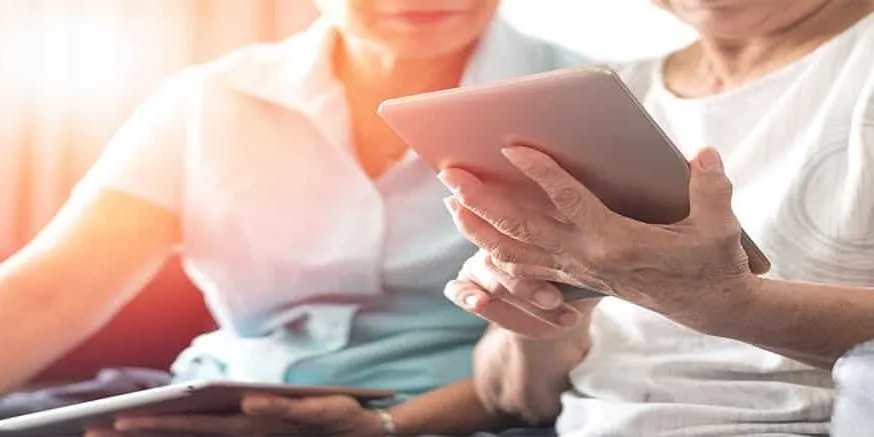Advancements in technology are often geared toward improving a certain area or aspect of our lives. As such, technological advancements have been closely linked to healthcare, due to the direct impact they can have on quality of life. Emerging technology is finding more and more applications for supporting the health and well-being of its users. One segment of the population that can especially benefit from healthcare technology is geriatric patients.
Technology can be used to empower independent living and help the elderly retain their autonomy. It can also help family members and caretakers to provide appropriate care. Whether the patients are living at home or staying in a care facility, here are four of the benefits healthcare technology can offer geriatric patients.
1. Personal Care
As a wearable device, DFree uses ultrasound technology to monitor the wearer’s bladder in order to help address urinary incontinence. The device is non-invasive and can communicate with the user’s smartphone in order to send notifications when it is time to use the bathroom. By notifying users in advance, this device helps maintain patient dignity and can empower independent living or assist caretakers. The device is available for both individual monitoring and for those living or staying temporarily in care facilities.
Other smart devices monitor glucose levels for patients requiring insulin. These can alert wearers when their glucose levels are getting low. Advance notifications help patients with diabetes stay on top of their medication schedule and empower them to live without worrying about constantly checking their levels.
2. Managing and Monitoring Medication
HERO is a smart medication dispenser that manages doses and reminds users when to take their pills. It stores up to ten types of medication and dispenses pills on schedule. A pin code can be set up to ensure that medication is taken at the right time by the right person. You can link to the HERO device by setting up the app on a smartphone. The app allows users to track their own medication or enables caretakers to stay up-to-date with those they are caring for. The app is not mandatory since the device itself will light up and make a sound when it is time to take medication. However, users can opt to receive mobile alerts if a dose is missed. As an additional complimentary service, HERO Fill monitors the amount of medication left and can automatically refill prescriptions to ensure that users never run out.
Other devices such as MedAngel monitor the storage temperature of medications and send the data to the connected smartphone app. This way, users can track their medication and ensure that they are within the correct temperature range. Temperature fluctuations or incorrect storage temperatures can hinder the effectiveness of the medication. Monitoring capabilities are also important during travel. It can be detrimental if the medication is accidentally frozen or exposed to too much heat.
3. Alert and Monitoring Systems
We have long been familiar with alert necklaces that those at risk of falling can wear. At the press of a button, they can signal that they are in need of help. A call center then determines whether emergency personal should be dispatched or if they require a different level of assistance. Certain devices have the capability to include location information either through GPS or when connected to WiFi. However, alert systems have expanded to include larger monitoring systems as well.
Monitoring systems vary in their capabilities. Some serve as an alert system for the home while others can also monitor activity, temperature and movement through sensors. Family members and caretakers can track activity through a management portal. They can also receive notifications if any activity seems out of the ordinary. Monitoring systems won’t appeal to everyone. However, they can be a beneficial option for those who want to extend independent living, are in a recovery period or need additional care. Additionally, one monitoring system, Canary Care, highlights their emphasis on privacy by utilizing sensors that don’t record audio or video and encrypt the user information.
4. Therapeutic Robots
PARO is a therapeutic robot modeled after a baby harp seal. This companion animal is programmed to respond to interaction through its various sensors. It then adapts the behaviors that those interacting with it like best. It has been used for elderly patients and has particular promise for calming down agitated patients due to its positive psychological effects. The benefits of PARO are similar to live animal therapy.
Though not specifically designed for the elderly, Qoobo is another, more simple, therapeutic robot. Qoobo looks like a soft cushion with a tail. It is meant to reduce stress by simulating the tail movements of cats and dogs. While there is something special about interacting with live furry animals, therapeutic robots are beneficial when live animals are not practical or possible. With minimal care, these robots can help improve the psychological and physiological health and wellbeing of the elderly. They have also been found to foster positive interactions with others as well.
There are many ways in which healthcare technology can assist geriatric patients and improve their quality of life. Different devices help address care needs, support independence and assist caretakers.
If you’re looking to develop healthcare technology, the team at 7T is here to help. We have experience developing software for the healthcare industry. For example, one of our client’s mobile app, MediBookr, uses natural language processing (NLP) to connect patients with healthcare professionals. We also specialize in machine learning, data lake creation, and system integrations, which all play into digital transformation for healthcare. To discuss your mobile app or custom software development project, reach out to 7T today.










